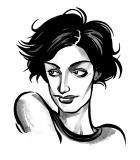When a culture journalist laments the fact there are too many books to read and too little time, they’re usually talking about new publications. When that culture journalist is me, I’m talking about the staggering number of revived and reprinted obscurities unearthed from decades past that are toppling my TBR pile.
The popularity of Hidden Gems, my annual roundup of notable titles re-issued and rescued from obscurity, inspires me to seek them out.
When it comes to reviving forgotten authors or putting neglected books back into print, many have heard of New York Review Books Classics, the literary journal’s publishing arm. Their 2006 revival of John Williams’ 1965 campus novel, Stoner, put them (and the practice) on the map.
In England, Nicola Beauman founded Persephone Books in 1998 and made a similar splash when their reprint of a 1938 Winifred Bowman novel was made into the very successful 2008 Frances McDormand movie, Miss Pettigrew Lives for a Day; the novel remains their bestseller. The British Library Women Writers series highlights the best “middlebrow” fiction from the 1910s to 1960s, and Crime Classic and other genre imprints challenge the established and accepted literary canon in other ways. Here in Canada, House of Anansi’s A List expands the CanLit landscape and Véhicule Press’s Ricochet Books revives vintage noir mysteries. And all of them generally come with a fresh appreciation, written by an admiring contemporary author, re-assessing their importance in the literary landscape or adding important context.
With the dizzying number of books published every year, what goes into identifying, securing the rights and publishing forgotten books? What makes them worthy of republishing? Curious about the mechanics of how great books get a second life, I sought out a few editors who specialize in rooting out these treasures.


